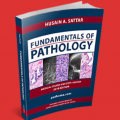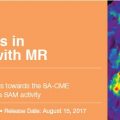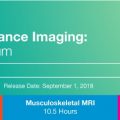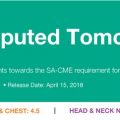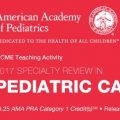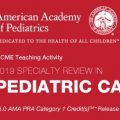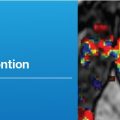Surgical Pathology Update Diagnostic Pearls for the Practicing Pathologist 2018
This CME Activity is designed to provide a comprehensive review of soft tissue, gastrointestinal, genitourinary, pancreaticobiliary and endocrine pathology. Content focuses on diagnostic pearls which lead to an accurate diagnosis as well as how to best avoid diagnostic pitfalls. In addition, faculty highlight the most useful and pertinent diagnostic immunohistochemical and molecular genetic techniques used in practice today.
Product Details
- Official Price: $995.
- Points to Download: 1000 Points
- Format: 17 Video Files (.mp4 format).
- File Size: 4.36 GB.
- Download Link Below.
Download Link:
This post contains protected content. You must be logged in and have 1000 points to unlock it.
Description:
Target Audience
This CME activity is primarily intended and designed to educate pathologists
Accreditation
Physicians: Educational Symposia is accredited by the Accreditation Council for Continuing Medical Education (ACCME) to provide continuing medical education for physicians.
Educational Symposia designates this enduring material for a maximum of 15.25 AMA PRA Category 1 Credit(s)TM. Physicians should claim only the credit commensurate with the extent of their participation in the activity.
All CME course participants are required to pass a written or online test with a minimum score of 70% in order to be awarded credit. (Exam materials, if ordered, will be sent with your CME order.) All CME course participants will also have the opportunity to critically evaluate the program as it relates to practice relevance and educational objectives.
AMA PRA Category 1 Credit(s)TM for these programs may be claimed until December 31, 2020.
This CME activity was planned and produced by Educational Symposia, the leader in diagnostic imaging education since 1975.
This CME activity was planned and produced in accordance with the ACCME Essential Areas and Elements.
Educational Objectives
At the completion of this CME activity, subscribers should be able to:
- Develop an approach to common morphologic patterns seen in soft tissue tumors.
- Discuss the ancillary diagnostic approach to difficult soft tissue tumors including immunohistochemistry, molecular, and genetic diagnostic tests.
- Describe the most important diagnostic clues and patterns seen in soft tissue tumors which lead to a specific diagnosis.
- Explain the controversies regarding diagnostic criteria for Barrett’s esophagus and Barrett’s-related dysplasia.
- Discuss the effects of contemporary therapy on the pathology and management of patients with inflammatory bowel disease.
- Describe the role of the pathologist in helping to manage patients with IBD-related dysplasia and neoplasia.
- Apply risk stratification criteria for the prognostication of gastrointestinal stromal tumors.
- Discuss and recognize the succinate dehydrogenase-deficient gastrointestinal stromal tumor and understand the clinical significance of this category of GIST.
- Describe the transcription factors most useful for the identification of primary site location in metastatic carcinomas.
- Discuss the diagnostic markers for distinguishing hepatocellular carcinoma from metastatic carcinomas to the liver.
- Apply immunohistochemical markers to determine the primary site for metastatic well-differentiated neuroendocrine tumor.
- Accurately render a diagnosis of non-invasive follicular thyroid neoplasms with papillary-like nuclear features and recognize its mimics.
- Identify tumors with progression to poorly differentiated or anaplastic thyroid carcinoma.
- Recognize the morphologic spectrum of adrenal cortical carcinoma.
- Describe the features helpful in establishing a malignant diagnosis of prostate cancer on needle biopsy.
- Review the morphologic features essential in distinguishing benign mimickers from bladder cancer.
- Recognize unusual variants of common renal tumors and become familiar with more recently described renal tumors.
- Appreciate the subtle histomorphologic features that can help to distinguish well-differentiated ductal adenocarcinoma from reactive changes in the pancreas.
- Appreciate the anatomic and histologic compartments of the ampulla and their significance in the versatility and subclassification of ampullary tumors.
- Acquire knowledge of new concepts, terminology and histologic grading of pancreatic neuroendocrine tumors.
No special educational preparation is required for this CME activity
Topics/Speaker:
01. Helpful Tips for Resolving Differential Diagnostic Consideration on Prostate Biopsy – Cristina Magi-Galluzzi, M.D., Ph.D
02. Diagnostic Pitfalls in Bladder Pathology – Cristina Magi-Galluzzi, M.D., Ph.D.
03. Common Renal Cell Neoplasms and Their Differential Diagnosis – Cristina Magi-Galluzzi, M.D., Ph.D.
04. The Evolution of Immunohistochemistry in Soft Tissue Tumor Pathology From Differentiation to Molecular Genetics – Jason L. Hornick, M.D., Ph.D.
05. Mesenchymal Tumors of the Gastrointestinal Tract An Update on GIST and Differential Diagnosis Using Immunohistochemistry – Jason L. Hornick, M.D., Ph.D.
06. Metastatic Carcinoma of Unknown Primary Diagnostic Approach Using Immunohistochemistry – Jason L. Hornick, M.D., Ph.D.
07. The Trouble with Fat Diagnostic Issues with Well-Differentiated Lipomatous Tumors – John R. Goldblum, M.D.
08. Common Morphologic Patterns in Soft Tissue Tumors Part 1 – John R. Goldblum, M.D.
09. Common Morphologic Patterns in Soft Tissue Tumors Part 2 – John R. Goldblum, M.D.
10. A Guide to Noninvasive Follicular Thyroid Neoplasm with Papillary-like Nuclear Features (NIFTP) – Justine Barletta, M.D.
11. A Case-Based Approach to Tumors of the Adrenal Gland and Paraganglia – Justine Barletta, M.D.
12. Update on Ampulla and Gallbladder Pathology – N. Volkan Adsay, M.D.
13. Neuroendocrine Tumors of the Gastrointestinal and Pancreatobiliary Tracts – N. Volkan Adsay, M.D.
14. Differential Diagnosis of Pancreatic Tumors – N. Volkan Adsay, M.D.
15. A Contemporary Update of Colitis-associated Dysplasia – Robert D. Odze, M.D., FRCPc
16. Barretts Esophagus Controversial Diagnostic Issues Relevant to Pathologists – Robert D. Odze, M.D., FRCPc
17. Role of the Pathologist in Diagnosing and Managing Patients with IBD – Robert D. Odze, M.D., FRCPc





